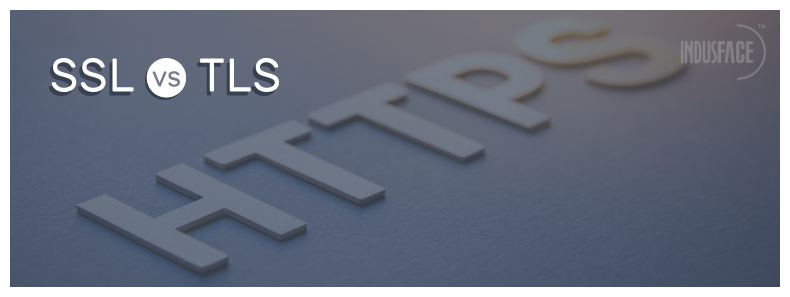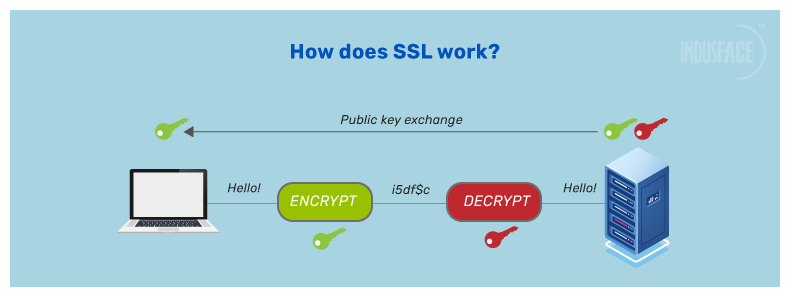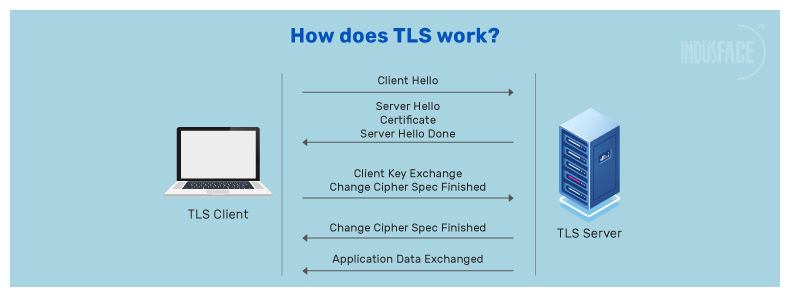SSL Vs TLS – Know Your Security Protocols For 2020
Enterprises today are building business applications in the cloud while integrating SaaS (Software-as-a-Service) apps into critical business infrastructure. Data is their most valuable asset, so protecting it is more important than ever. With this need, SSL/TLS encryption has become the crucial security protocol to enable privacy and data security for internet communications.
Both SSL (Secure Socket Layer) and TLS (Transport Layer Security) are the foundations of a secure connection for communication across an unsecured network. At present, over 90% of internet traffic across Google is being encrypted, according to the Google Transparency Report.
However, the problem is that there are many confusions on how they are related, and how they are different.
This blog sets out to help you understand the difference between SSL and TLS and how do they work.
SSL and TLS: Similarities
SSL and TLS are similar in terms of the security they offer. Both ensure that your data is secured with encryption when exchanged over the internet. They also assure that the site you are visiting is the one you intend to communicate with and not a middleman snooping on your transactions. Further, any server installed with SSL or TLS is equipped with a certificate issued by a trusted third-party Certificate Authority like Entrust.
So, are these two protocols the same? Not completely.
If SSL and TLS are different, then why they’re used interchangeably?
Today, when people say SSL, they actually mean TLS. Sometimes if people are more comfortable with something means it is hard for them to get away from them. They are more familiar with SSL and it makes it easier to go on, referring to TLS as SSL.
SSL Vs TLS: Know the Differences
The main reason why SSL and TLS are different is that TLS is the successor protocol to SSL. Both are inoperable with one another. When it comes to SSL vs TLS, they are different in their alert messages, functions, record protocols, authentication of messages, and encryption strengths.

History of SSL and TLS: How Did TLS Superseded SSL?
Netscape Communications introduced SSL 1.0 the first-ever SSL version in 1994 to establish a secured channel between their web browser and the server it connects. It was not released to the public as it was criticized for its weak crypto algorithms. The first public release was SSL 2.0 in 1995 but hackers quickly uncovered ways to exploit its security flaws. After a year, SSL 3.0 replaced version 2. SSL 3.0 was equipped with a new record type as well as new data encoding that made it incompatible with the previous version.
The SSL 3.0 used MD5 and SHA – 1 algorithm to create a hybrid hash. This version becomes more stable and was considered more secure for 8 years.
However, in 2014, the POODLE (Padding Oracle On Downgraded Legacy Encryption) attacks made this version insecure and led to the release of TLS, the more secure SSL version. IETF deprecated both the versions SSL 2.0 and 3.0. In 1999, TLS 1.0 came out with the backward compatibility mechanism to SSL 3.0. As the websites automatically fallback to SSL 3.0 from TLS 1.0, attackers triggered a man-in-the-middle attack, which made the ciphertext decipherable. So, security experts advised disabling the SSL 3.0 experience in your browsers to deactivate the fallback mechanism, which enables the attack.
After seven years, TLS 1.1 the improved version of TLS was released with some significant upgrades like a shield against cipher-block chaining as well as support for the Internet Assigned Numbers Authority. TLS 1.1 was again replaced by TLS 1.2 in 2008.
Down the line, the versions TLS 1.0 and 1.1 were determined to be vulnerable and set to be depreciated in 2020. The latest version TLS 1.3, which was finalized in 2018 is packed with sophisticated features over its predecessors. In January 2020, technology giants like Google, Apple, Microsoft, Cloudflare, and Mozilla declared the deprecation of TLS 1.0 and TLS 1.1, which makes TLS 1.2 and 1.3 the most preferred cryptographic protocols.
How SSL And TLS Protocols Establish Connections?
When it comes to SSL vs TLS, the key difference is how these protocols make secure communication.
SSL begins by applying security and goes forward into secured communication. Once it is installed, if a server wants to send data to the browser, they first negotiate an encryption connection to exchange session keys. Then the sender encrypts the data into an unreadable string along with the session key and sends it to the browser. The browser then decrypts the communication with its private key. It employs cryptographic technologies like symmetric and asymmetric algorithms, message authentication, and hashes digital signatures.

TLS, on the other hand, starts with an insecure “hello” message to the server and proceeds into a secured connection only after a successful handshake between TLS client and server. If the TLS handshake fails for any reason, the protocol will not establish a connection.

In both SSL and TLS certificates, all these processes happen in milliseconds without the fear of any 3rd party being able to interpret the data.
Compare SSL vs TLS: The Key Difference
| SSL (Secure Socket Layer) | TLS (Transport Layer Security) |
| Introduced in 1995 by Netscape | Launched in 1999 by the IETF (The Internet Engineering Task Force) |
| Supports the Fortezza cipher suite | Supports the standardization process, which ensures easy adoption of cipher suites like Triple DES, RC4, IDEA, and others |
| SSL uses MAC (Message Authentication Code) after each message encryption | TLS uses HMAC (Hash-based Message Authentication Code) to encrypt messages |
| Released versions
SSL 1.0– Deprecated SSL 2.0– Deprecated SSL 3.0 – Deprecated |
Launched Versions
TLS V1.0– Deprecated TLS V1.1– Deprecated TLS V1.2 – Currently used TLS V1.3 – Currently Used |
| SSL versions don’t support TLS | TLS V1.0 had backward compatibility to SSL 3.0 |
| Not supported by modern browsers | Most modern browsers support TLS |
With all these differences, TLS superseded SSL and became an excellent option for security and privacy.
The Closure
Today’s websites increasingly require SSL encryption, as search engines and browsers continue to upsurge the consequences for unsafe websites. Your visitors are less likely to access or submit contact or payment information if they feel their data won’t be safe. Therefore, it is wise to keep adopting an SSL certificate to keep your site secure and communications private.
As we mentioned earlier, today there is no difference between SSL and TLS certificates. Whether you call it an SSL certificate or TLS certificate, you are actually using a TLS certificate.
If you want the latest SSL/TLS protection, head over to Indusface, an outstanding partner in this world of web security and certificates acronyms. We will deliver excellent security and round the clock customer support – not to be outshined by the security service providers out there.
Stay tuned for more relevant and interesting security articles. Follow Indusface on Facebook, Twitter, and LinkedIn.


 November 11, 2020
November 11, 2020



